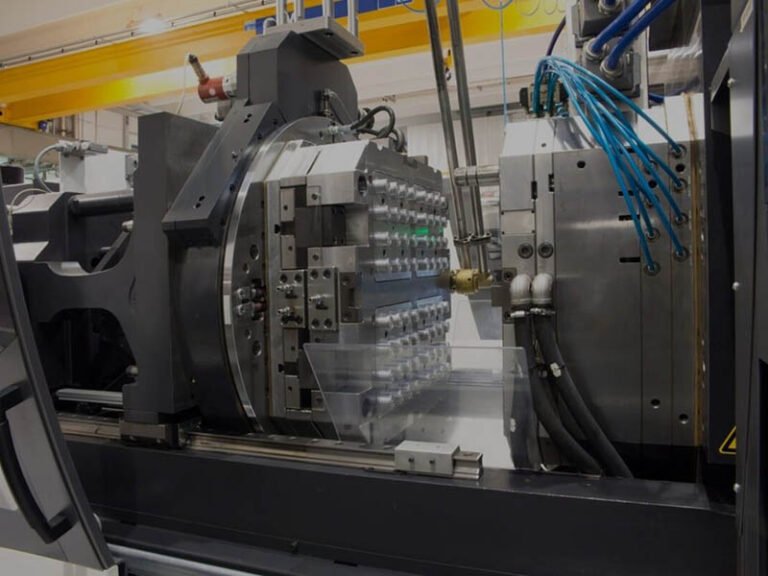Poor gloss means that the surface is dim and has no gloss, and the transparency of transparent products is low. There are many reasons for poor gloss. Other injection defects are also the cause of poor gloss.
1. Mold failure
Since the surface of the plastic part is a reproduction of the mold cavity surface, if there are surface defects such as scars, corrosion, and micropores on the surface of the mold, it will be reflected on the surface of the plastic part to produce poor gloss. If the surface of the cavity is oily, moisture, an excessive amount of release agent, or improper selection, it will also make the surface of the plastic part dark.
Therefore, the surface of the mold cavity should have a good finish, and it is best to take polishing treatment or surface chrome plating. The surface of the cavity must be kept clean, and oil and water stains must be removed in time. The variety and amount of release agents should be appropriate.
Mold temperature also has a great influence on the surface quality of custom plastic parts. Generally, different types of plastics have a large difference in surface gloss under different mold temperature conditions. Excessive or too low mold temperatures will cause poor gloss. If the mold temperature is too low, the melt will solidify immediately after contact with the mold cavity, which will reduce the reproducibility of the mold cavity surface.
In order to increase the gloss, the mold temperature in the process of plastic injection molding can be appropriately increased. It is best to use warm water in the mold cooling circuit to quickly transfer heat in the cavity to avoid prolonging the molding cycle. This method can also reduce the residual stress during molding. In general, except for polystyrene, ABS, and AS, the mold temperature can be controlled above 100 degrees. It should be noted that if the mold temperature is too high, the surface of the plastic part will become dark.
In addition, the draft angle is too small, the section thickness changes suddenly, the ribs are too thick, and the gate and runner sections are too small or suddenly change, the gating system has too much shear, and the melt flows in a turbulent state, and the mold exhaust is poor. Mold failure will affect the surface quality of plastic parts, resulting in poor surface gloss.
2. Improper control of molding conditions
If the injection speed is too fast or too slow, the injection pressure is too low, the holding time is too short, the booster pressure is not enough, the cushion is too large, the nozzle hole is too small or the temperature is too low, the filler dispersion performance of fiber reinforced plastics is too poor, Exposed fillers or non-directional distribution of aluminum foil-like fillers, too low barrel temperature, poor plasticization of the melt and insufficient material supply will cause poor surface gloss on the plastic parts. In this regard, adjustments should be made to specific circumstances.
If a dark area is generated near the gate or at the variable cross-section, it can be eliminated by reducing the injection rate, changing the gate position, expanding the gate area, and increasing the arc transition at the variable cross-section.
If there is a thin layer of milky white on the surface of the plastic part, the injection speed can be appropriately reduced. If the dispersing performance of the filler is too poor and the surface gloss is poor, you should switch to a resin with better flowability or a screw with a stronger mixing ability.
3. The molding materials do not meet the requirements for use
The moisture or other volatile content in the molding raw materials is too high, and the volatile components condense between the cavity wall of the mold and the melt during molding, resulting in a poor surface gloss of the plastic part. The raw materials should be pre-dried. More details can be viewed in molding services.
Raw materials or colorants decompose and change color, resulting in poor gloss. Materials and colorants with higher temperature resistance should be selected.
The fluidity of the raw materials is too poor so the surface of the plastic part is not dense and causes poor gloss. It should be replaced with a resin with better fluidity or an appropriate amount of lubricant and the processing temperature should be increased.
The raw materials are mixed with foreign materials or incompatible materials. New materials should be used.
The raw material particle size is not uniform. Raw materials with large particle size differences should be screened out.
Crystalline resin has poor gloss due to uneven cooling. The mold temperature and processing temperature should be controlled reasonably. For thick-walled plastic parts, if the cooling is insufficient, the surface of the plastic parts will be hairy and the gloss will be dark. The solution is to immediately put the plastic parts in cold water after taking them out of the mold Cooling and shaping them in the cold press mold.
The ratio of recycled materials to raw materials is too high, which affects the uniform plasticization of the melt. Its dosage should be reduced.




